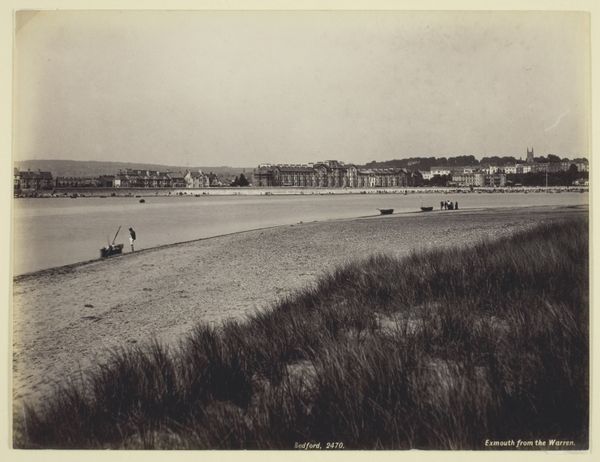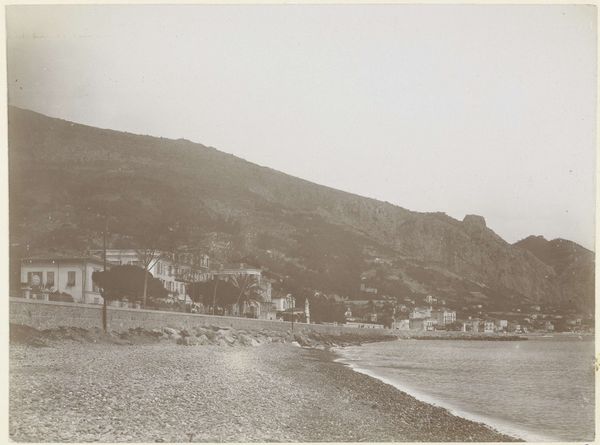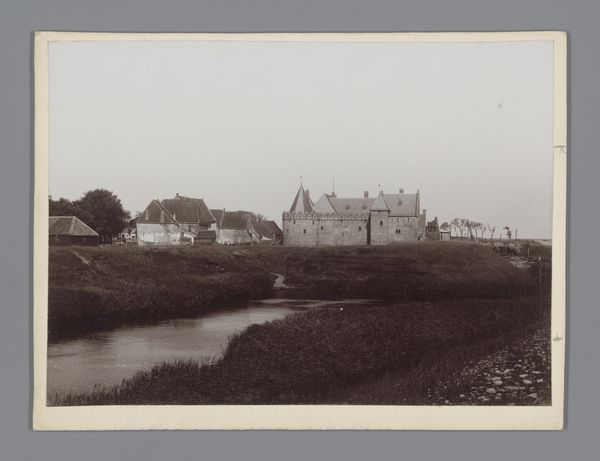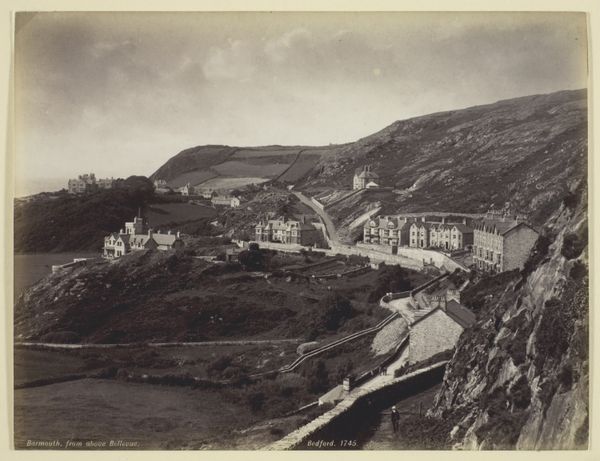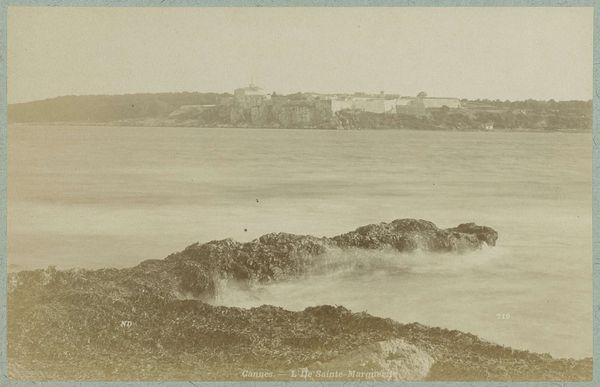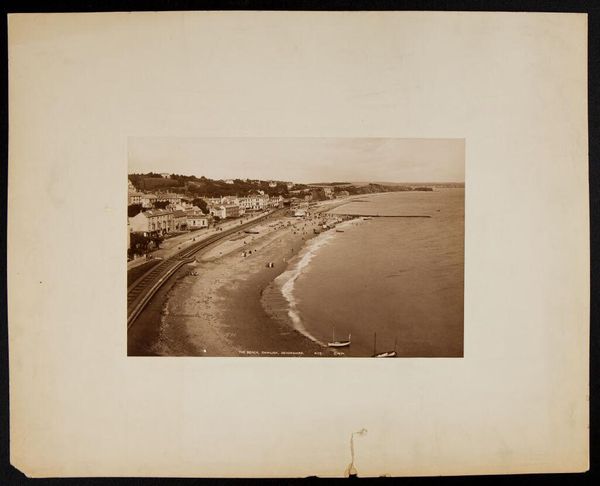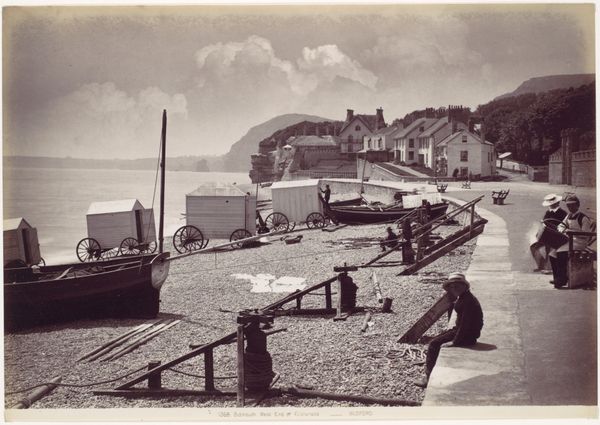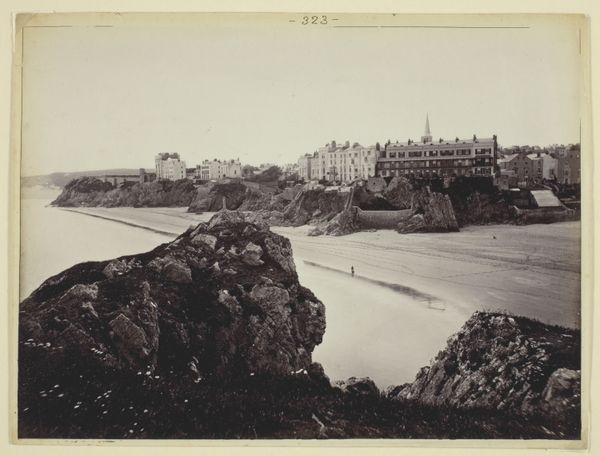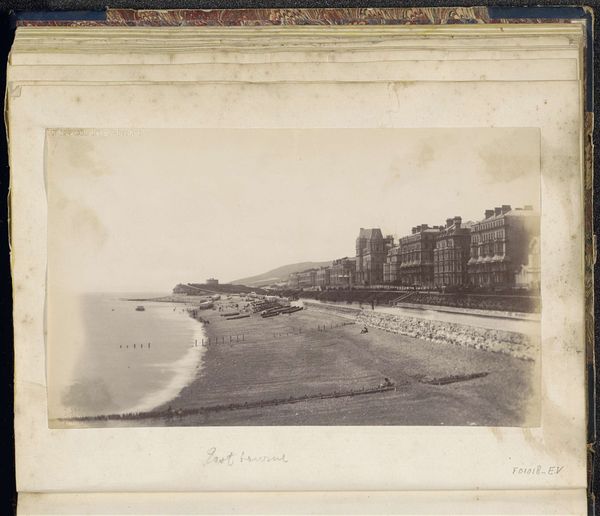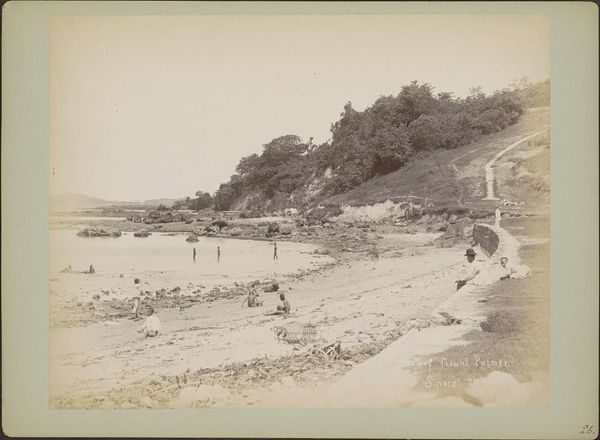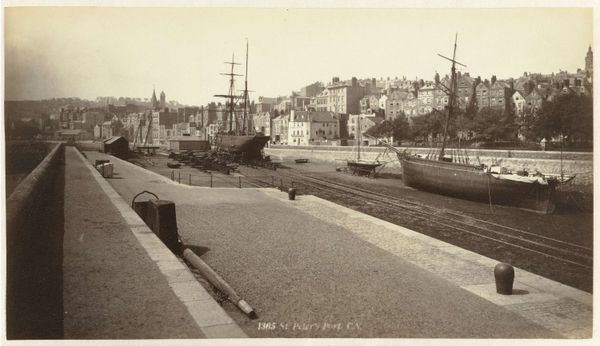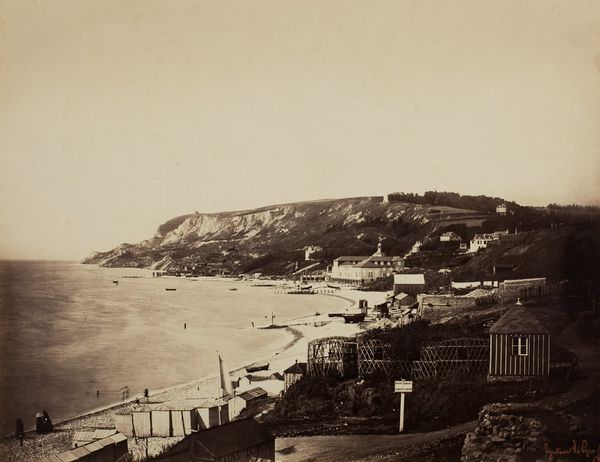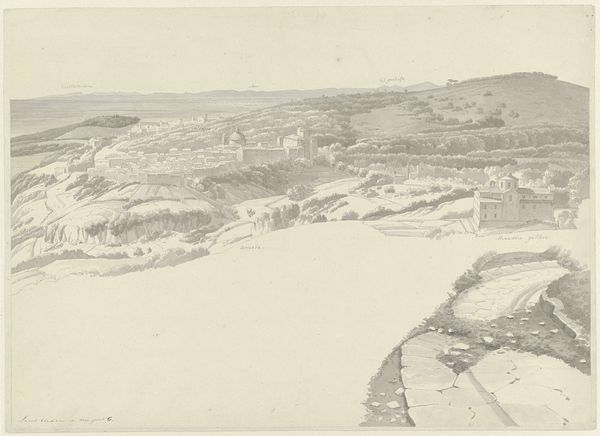
Dimensions: 12.6 × 19.8 cm (image/paper)
Copyright: Public Domain
Editor: This gelatin-silver print, “Westward Ho and Pebble Ridge,” by Francis Bedford, likely taken between 1860 and 1894… It's such a compelling composition. What strikes me most is the immense stretch of pebbles leading towards those houses in the distance. How do you interpret this work? Curator: I see this image as a fascinating document of landscape and society intertwined during a period of immense transformation. Bedford was working in an era of expanding railway networks and increased accessibility to the coast. Notice how the very detailed pebble ridge acts almost like a stage leading toward the new resorts that have begun to speckle the ridge? Editor: Yes, it’s interesting to consider the societal context and impact on the natural landscape, and I can sense it within Bedford’s choice to include them here. Curator: Precisely! These newly built resort towns also signal another element for which we can interrogate this work – the beginning of leisure for some. These new resorts catering to middle and upper classes could be juxtaposed with other less picturesque spaces not deemed fit for photography that capture other perspectives. Editor: I hadn’t considered the implicit power dynamics. Curator: And isn't that the crux of so much art? Who has the power to be seen, and how are they represented? Bedford's photograph prompts us to question whose stories are being told and whose are being omitted. What does "progress" mean, and who benefits from it? Editor: So true. Thinking about whose narrative is prioritized really changes my understanding of this tranquil scene. Curator: It certainly moves beyond a simple landscape photograph. Considering those questions—and more—offers a richer, more critical interpretation. Editor: Thanks. Now, I see a layered history here. I will definitely reflect on how crucial socio-economic aspects can add nuance to my reading of landscapes.
Comments
No comments
Be the first to comment and join the conversation on the ultimate creative platform.
